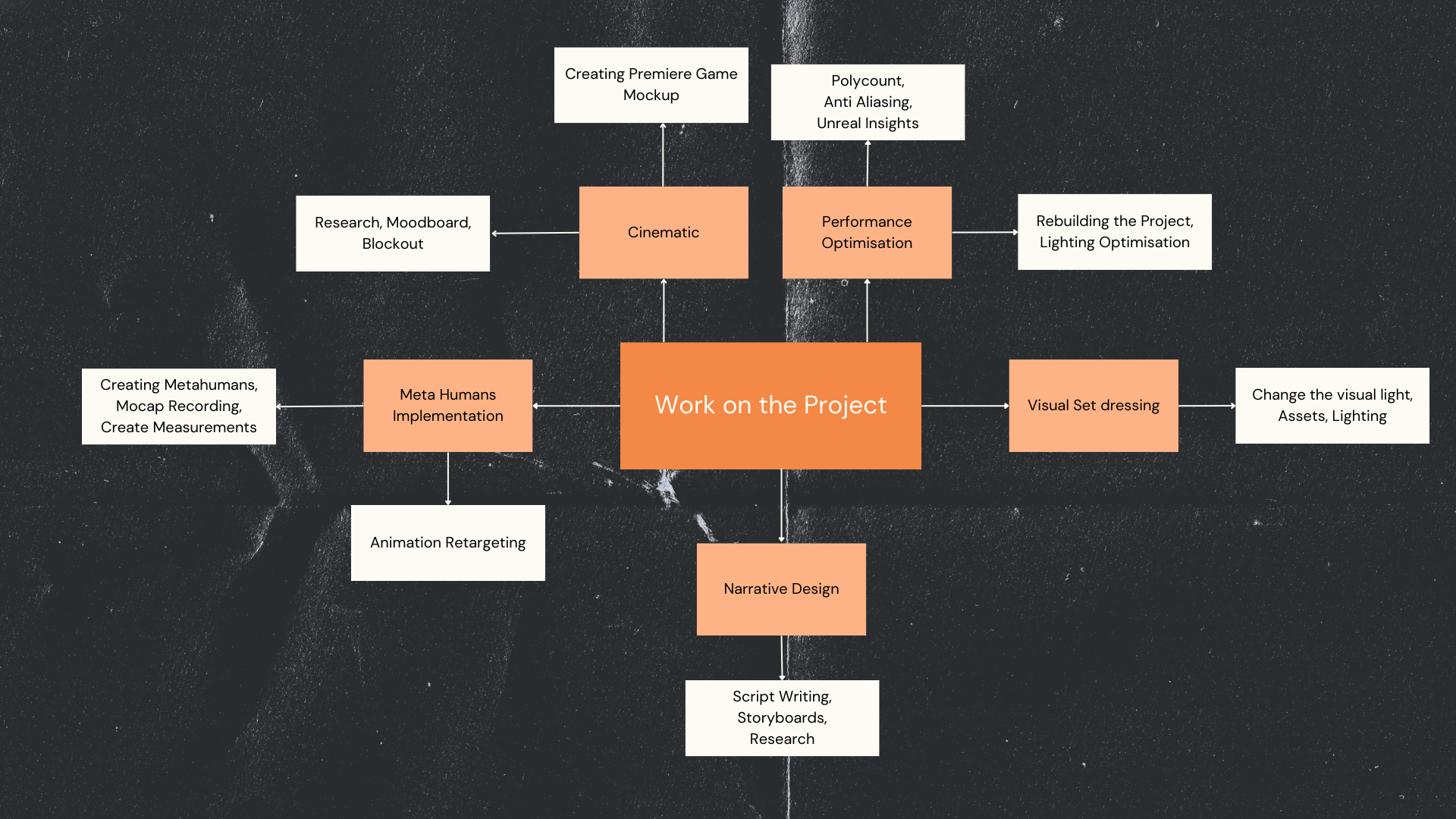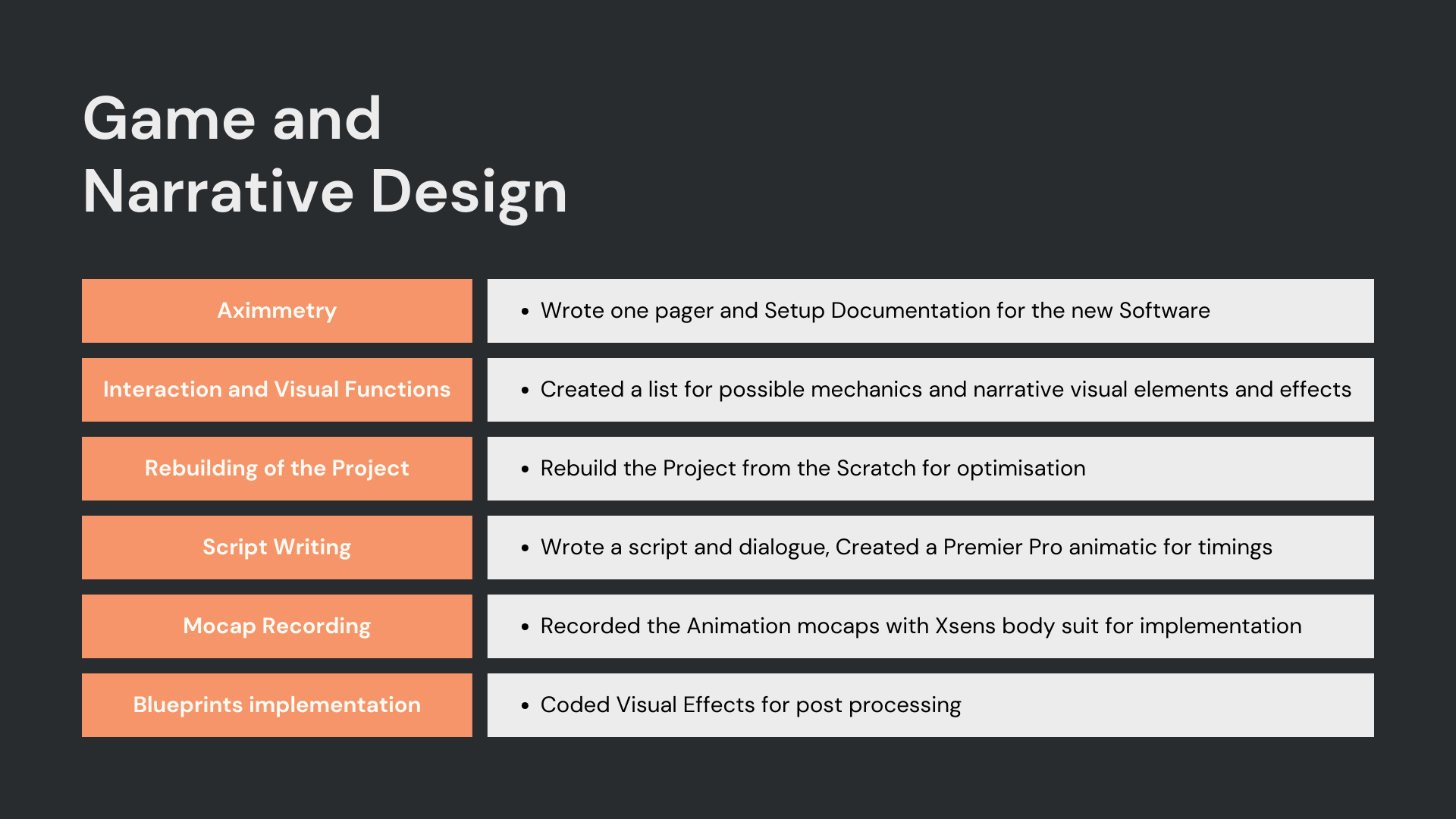Performance Optimisation of “Reintegration”
Flowchart of project work process.
During my internship at XRLab in the role of Game Designer Generalist Intern, I was assigned to the project "Reintegration" for the Verwey-Jonker Instituut. My responsibility as a Generalist was to continue the production of the project after the previous interns.
The "Reintegration" project is an interactive VR experience designed to assist Youth Care Workers in detecting and overcoming burnout. Developed on Unreal Engine 5.3, it marked my initial foray into VR development. Nevertheless, this didn't deter me from optimizing and enhancing the project.
Initial Version
Progress Version
During my optimization efforts, I scrutinized all project settings, assets, polycounts, light sources, and Blueprints. Throughout this process, I purged unnecessary elements from the scene and delved into the version and lighting compatibility specific to VR, exploring their impact on performance. Additionally, I fine-tuned several assets by reducing their polycount.
In my testing phase, I sought an optimal engine version and lighting method compatible with Meta Humans. Given their resource-intensive nature, incorporating two Meta Humans into the scene while maintaining stable FPS posed a challenge. Following numerous performance tests, I compiled a document summarizing the statistics gleaned from Unreal Insights.
FPS improvement on from initial version (top row) to my last version (bottom row)
Polycount change
Testing of the Lighting Methods and Performance with Meta Humans
Overview of the work










